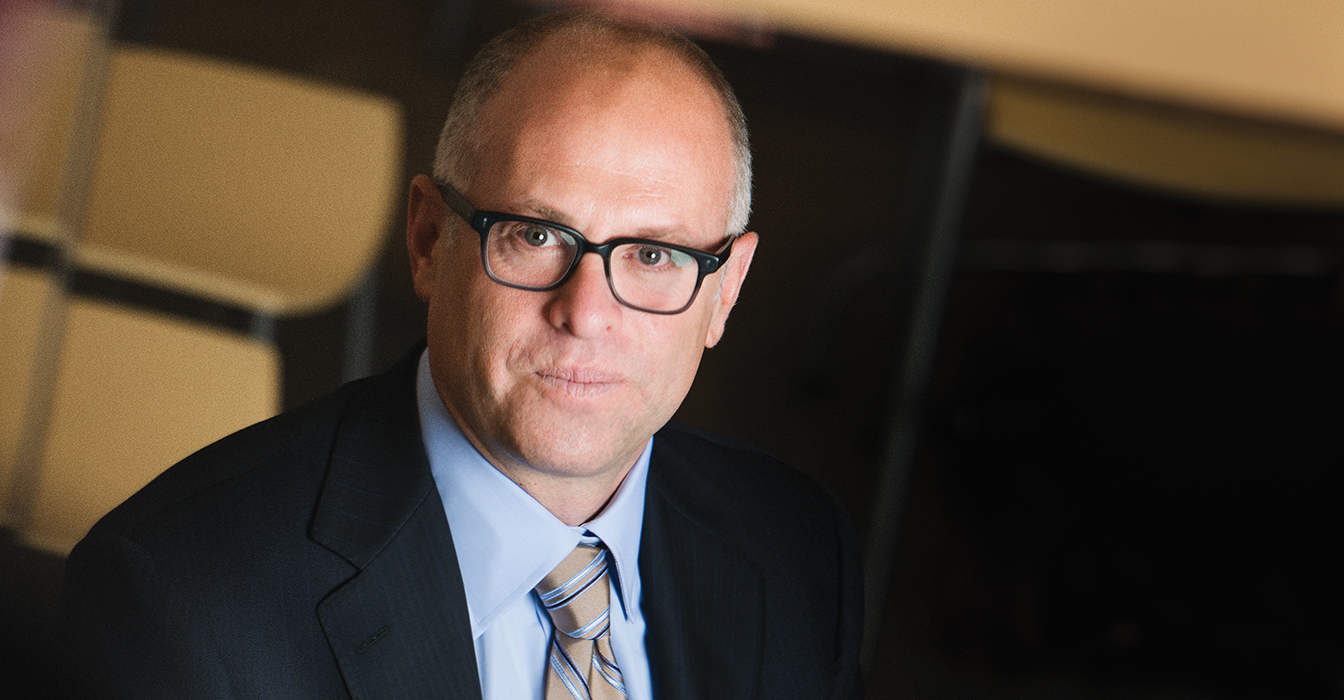Lawyer Limelight: Gerald Silk
By John Ryan | November 10, 2014 | Lawyer Limelights, Bernstein Litowitz Features

Photo by Laura Barisonzi.
As the leading plaintiffs’ securities litigation firm in the nation, Bernstein Litowitz Berger & Grossmann is bound to make an impact after any corporate fraud scandal, pushing for both recoveries and reforms. A key member of that tireless army is Gerald Silk, who also heads the Bernstein Litowitz team that evaluates which cases to take on.
Investors around the world are happy that Silk, the son of a plaintiffs’ lawyer, switched sides after initially doing defense work at Weil, Gotshal & Manges. The 1995 Brooklyn Law School graduate has played a key role in the firm’s recovery of approximately $6 billion in federal cases arising out of the subprime crisis as well as its pursuit of more in Massachusetts state court.
Lawdragon: Do you see a difference in the types of illegal conduct from your early years of practice and now?
Gerald Silk: I see no difference. Fraud is fraud. When people decide to commit bad acts the consequences are always devastating to the victims. That said, I believe we have seen a difference in the market’s reaction to fraud. In the past, the market reacted more swiftly and severely to revelations of fraud and misconduct. It was not uncommon to see massive stock drops, for example, with Cendant Corporation – in April 1998, the disclosure of accounting irregularities caused the then-largest stock drop in U.S. history. Now, I feel as if the reaction tends to be more muted. I am not sure exactly why. Perhaps it is because management is couching their disclosures and conduct more cleverly to create less of a reaction.
LD: In recent years you have represented investors in securities actions arising from the subprime mortgage crisis. Is there a particular case that illustrates the work you and Bernstein Litowitz have done to help those defrauded by investment banks or corporations?
GS: We have recovered nearly $6 billion on behalf of our clients in federal court class actions related to the subprime mortgage crisis. But if I had to choose a particular case that defines our work in this area, I would say it is our ongoing prosecution in Massachusetts state court of Cambridge Place Investment Management Inc. v. Morgan Stanley & Co., Inc., et al. We represent Cambridge in a direct (non-class) action asserting state securities law claims against 16 Wall Street banks, including Morgan Stanley, Citigroup, Goldman Sachs, JPMorgan and Merrill Lynch, and 44 issuers of residential mortgage-backed securities. We allege that the defendants sold the RMBS to Cambridge by means of untrue statements and omissions in violation of Massachusetts law. This case received media attention, including feature coverage in The New York Times, because we brought it in state court. Settlements have been reached with all but one of the Wall Street bank defendants.
LD: On a one to 10 scale, with 10 being worst for noxious financial instruments, what would you give RMBS?
GS: The RMBS itself is not the problem. Like many cases we bring, the problem is when the representations in offering materials are not accurate or truthful as to the quality and value of the underlying collateral. That is exactly the kind of conduct for which we hold banks and financial institutions accountable.
LD: And if you were to give a grade to the legal system’s response to RMBS in terms of delivering justice to those defrauded, what would it be?
GS: Each case has its own facts and has to stand on its own. While we haven’t agreed with every decision to come out of the trial and appellate courts, on balance I think the courts have done a fair and impressive job adjudicating these complex claims.
LD: I see you studied at Wharton before earning your law degree. Were you always interested in business? What did you foresee doing with your degree as an undergraduate?
GS: I always had an interest in business management and government, with a focus on labor relations, which ultimately led me to law school. But not before spending a great year working for six months in Jerusalem for the Ministry of Justice, and another six months waiting tables in Vail and skiing every day.
LD: At the start of your career you spent almost three years as an associate with Weil, defending securities cases. What prompted you to switch to the plaintiff side?
GS: I would say there are three primary reasons. I always identified with the victim, in part due to the fact that my father was a plaintiff attorney and I grew up steeped in his work. Also I identify with the contingency fee model. It is very different from the hourly model, where you get paid regardless of whether you win or lose. In addition, I found that I enjoy crafting and strategizing on “offense,” if you will, on these cases. The defense/defensive mindset is very different – you are often forced to look for delay tactics, and I enjoy driving the process more than responding to it.

